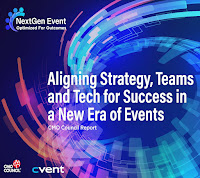 |
| Source: Shutterstock |
Key Takeaways
Online B2B marketplaces are changing the landscape of business-to-business commerce. In 2019, only about 7.5% of total global online B2B sales were made via online marketplaces, but they are forecast to account for 30% of all online B2B sales by 2024.
In this article, we'll explore the shift to online B2B buying and the meteoric growth of online B2B marketplaces. We'll explain how online B2B marketplaces work, and we'll discuss what the proliferation of marketplaces means for B2B marketing.
The Rise of B2B E-Commerce
It's well documented that online B2B buying has been growing rapidly for several years. eMarketer predicts that B2B e-commerce will total $1.77 trillion this year, up from $1.58 trillion in 2021, and will reach $2.44 trillion in 2025. In 2020, B2B e-commerce sales in the US represented only 14% of total US B2B sales, so B2B e-commerce has plenty of room to grow.
The growth of B2B e-commerce is due to several factors. Because of the popularity of consumer-oriented e-commerce sites, most business buyers are accustomed to making online purchases in their personal lives, and many have become comfortable with making business purchases online.
A generational "changing of the guard" in B2B buying is also boosting the growth of B2B e-commerce. In a 2020 survey of 17,000 business professionals by The B2B Institute and GWI, 40% or more of the millennial respondents (ages 21-40) said they have influence at every stage of the buying process used in their company. Millennial business buyers have been using digital technologies for most of their lives, and they are particularly comfortable using e-commerce for business purchases.
The COVID-19 pandemic accelerated the shift to online buying by consumers and business buyers. In the November 2021 edition of McKinsey's B2B Pulse Survey, 32% of the respondents ranked e-commerce as their company's most effective selling channel, up from 22% in the February 2021 survey. For the first time, e-commerce ranked higher than in-person as the most effective selling channel.
Clearly, e-commerce is already a major feature of the go-to-market operations of many B2B companies, and it's likely to become even more important in the future. As a result, e-commerce has become a hot topic among B2B company leaders, and it's been widely discussed in the business literature.
However, online B2B marketplaces have received considerably less attention, particularly in B2B marketing circles. Because of their popularity with business buyers, online marketplaces are likely to become a significant selling channel for many B2B companies. So, it's important that B2B marketers understand how they work and how to market effectively to marketplace buyers.
The Basics of Online B2B Marketplaces
 |
| Source: Public Domain |
An online B2B marketplace is an e-commerce environment where multiple vendors offer products or services to business customers. The distinguishing characteristic of an online marketplace is the role played by the marketplace operator. In a "pure" marketplace, the operator provides the e-commerce capabilities that enable transactions between buyers and sellers but doesn't sell its products or services in the marketplace.
Of course, many marketplace businesses are not "pure" marketplaces by this definition. For example, Amazon's consumer business is a "hybrid" because the company:
- Sells Amazon-branded products (e.g. "Amazon Basics")
- Purchases products from other companies and resells those products, thus acting like a conventional retailer
- Provides a marketplace that enables third-party vendors to sell on the Amazon platform
Marketplace operators can earn revenue in a variety of ways, such as by:
- Charging sellers or buyers, or both, a fee to join the marketplace
- Charging a transaction fee for each sale made in the marketplace
- Providing fulfillment services (e.g. "Fulfillment By Amazon"}
- Selling advertising on the marketplace site
B2B Marketplaces Are Growing Rapidly
Online B2B marketplaces are a relatively new feature of the B2B commerce landscape, but the number of marketplaces has been rapidly increasing. Last year,
Digital Commerce 360 listed 250 "leading" marketplaces, and that list isn't comprehensive.
The volume of business conducted on B2B marketplaces is also growing rapidly.
Digital Commerce 360 recently predicted that sales on B2B marketplaces grew 130% in 2021 and totaled $56.0 billion. The firm also estimated that in 2021, B2B marketplace sales grew 7.3 times faster than overall B2B e-commerce sales and 8.5 times faster than total manufacturer and distributor sales.
B2B marketplaces are growing because they are increasingly popular with business buyers.
According to Statista, about a third (34%) of global B2B buyers surveyed last September said they made 50% or more of their business purchases on marketplaces.
The Two "Flavors" of B2B Marketplaces
Online B2B marketplaces are classified as
horizontal or
vertical. A horizontal marketplace will typically offer a wide assortment of products or services that can be used by many types of businesses.
Amazon Business and
Alibaba are good examples of horizontal B2B marketplaces.
In contrast, vertical B2B marketplaces are designed for buyers working in specific industry verticals, and they offer products or services that are primarily used in those industries.
Farmers Business Network (agricultural products used by farmers),
ChemNet (agricultural and industrial chemicals) and
GoDirect Trade (aviation products) are good examples of vertical B2B marketplaces.
How Marketplaces Benefit Buyers
B2B marketplaces can provide business buyers and their companies several valuable benefits.
Easy supplier discovery - A marketplace makes it easy for business buyers to discover new suppliers.
Greater choice - By including products and services from multiple suppliers, marketplaces offer business buyers a wider assortment of goods and services than they can typically find with a single vendor.
Lower cost - When a marketplace focuses on standard products or services, it will typically include product/service pricing. This pricing information is visible to both buyers and sellers, and the price transparency can increase competition among sellers, which often results in lower prices for buying organizations.
One-stop shopping - A marketplace can enable business buyers to purchase multiple products or services across a range of categories in a single transaction, which can reduce the time buyers must spend finding and buying the products or services they need.
Reduced supplier management - Buying through a marketplace can significantly reduce the number of suppliers a buying organization must onboard and manage. Buyers are able to deal only with the marketplace for most purchase-related issues rather than dealing with multiple suppliers.
Marketplaces Help "Tame the Tail"
In addition to the specific benefits discussed above, online B2B marketplaces can help B2B companies address a larger business issue - how to better manage their "tail spend."
External purchases in most companies have a Pareto-like distribution. The largest 20% of outside suppliers (by dollar volume) typically account for about 80% of the total external spend, while the remaining 20% (or so) of spend is spread across the smallest 80% of suppliers. Sourcing and procurement professionals call this 20% "tail spend."
Tail spend is difficult to manage using conventional procurement practices because it involves a large volume of relatively low-value purchases made from many suppliers. Therefore, tail spend is not "professionally managed" in many companies, and the result can be overspending and missed opportunities for cost savings.
By using one or more B2B marketplaces for these types of purchases, companies can gain greater visibility of their tail spend. B2B marketplaces typically provide buying organizations detailed data regarding their purchases in the marketplace, and some marketplaces enable buying organizations to control the purchases made by their individual buyers.
For example, Amazon Business enables companies that enroll in the Amazon Business Prime program to designate some vendors or products as "Preferred" and others as "Restricted." Large enterprises can also completely block buyers from purchasing certain products.
How Marketplaces Benefit Sellers
The benefits of online B2B marketplaces for buying organizations and individual buyers are clear. But B2B marketplaces can also provide valuable benefits to selling companies.
One of the most important benefits is expanded reach. By joining a marketplace, selling companies gain exposure to a large pool of potential customers, some of which they would not have otherwise reached. For example, a marketplace will often provide exposure to potential customers located outside a seller's current geographic market area.
A B2B marketplace may also enable a company to sell to customers that the company cannot profitably serve through its existing sales/distribution channels. For example, the systems and processes used by some B2B companies make it difficult for them to earn a reasonable profit on "small" sales. The technologies and services offered by B2B marketplaces can make such sales profitable. Therefore, by joining a B2B marketplace, a company may gain the ability to serve new customer segments.
Implications for Marketing
As B2B marketplaces become increasingly popular with business buyers, more B2B companies are likely to make marketplace selling an integral part of their go-to-market strategy. The issue for marketers in such companies is whether successful marketplace selling will require some new marketing techniques.
Most B2B marketing techniques and practices are designed for "high consideration" purchases that involve expensive and/or complex products or services, multiple decision makers and long buying cycles. But high consideration purchases have never represented all or even most B2B commerce, and most purchases made on B2B marketplaces don't fit the high consideration stereotype.
Therefore, to drive sales via marketplaces, marketers will need to use a different approach to marketing. More specifically, they need to think like marketers at a consumer packaged goods company and focus on two areas that don't receive much attention in B2B marketing - brand building and merchandising.
Build Brand Awareness and Mental Availability
In a marketplace environment, when a buyer searches for a particular type of product, the marketplace software will likely display multiple options from multiple sellers. Under these circumstances, brand awareness/familiarity and mental availability will greatly influence the buyer's purchase decision.
Brand awareness is self-explanatory, but the concept of mental availability may be less familiar to some B2B marketers. Mental availability refers to the likelihood that a particular brand or company will come into the mind of a buyer when he or she is in a buying situation. When a brand or a company achieves a high level of mental availability with potential buyers, the odds of winning sales increase substantially.
Many of the advertising and marketing programs run by CPG marketers are designed to increase brand awareness and mental availability, and B2B marketers need to focus more attention on these objectives to drive marketplace sales.
Focus on Effective Merchandising
Successful selling on a B2B marketplace also requires good merchandising. Merchandising is usually associated with brick-and-mortar retailing. It encompasses things like store design, layout and decoration, product display and product packaging. The goal of merchandising is to create an in-store experience that will entice shoppers to buy.
When selling via an e-commerce channel - including a marketplace - the website is the "store" and merchandising is mostly about the functionality of the e-commerce platform and the content the website contains.
In a marketplace setting, the marketplace operator obviously controls the functionality of the e-commerce platform and also exercises some control over what types of product information can be used and how that information can be displayed.
However, individual sellers in a marketplace also have some control over the quality and completeness of the information appearing on their product pages. Therefore, B2B marketers need to make their product pages as appealing as possible to marketplace buyers.
For example, marketers should use high-quality product images and possibly include videos if they're allowed by the marketplace platform. Marketers should also focus on providing product information that is tailored to meet the needs and expectations of the types of buyers who are most likely to be using the marketplace.
As with merchandising in the brick-and-mortar world, the objective of merchandising in a marketplace setting is to create a shopping experience that will encourage business shoppers to buy.
Final Thoughts
Online B2B marketplaces are poised to become an important selling channel for a significant number of B2B companies. The volume of business conducted on marketplaces is growing because they provide business buyers a convenient, user-friendly and efficient way to find and buy a wide range of products and services.
They also benefit buying organizations by providing an effective way to gain greater visibility and control of external spending that is difficult and costly to manage using conventional sourcing and procurement methods.
These benefits will lead a growing number of business buyers and their companies to gravitate to online B2B marketplaces, and B2B suppliers must be prepared to sell on marketplaces if they want to be where their potential customers are.







